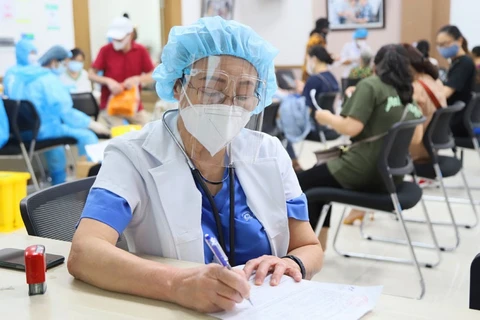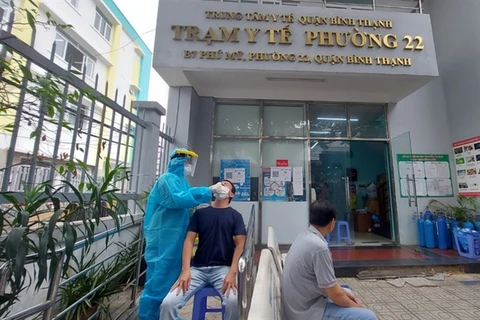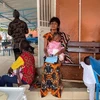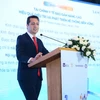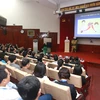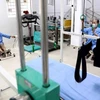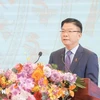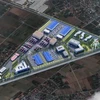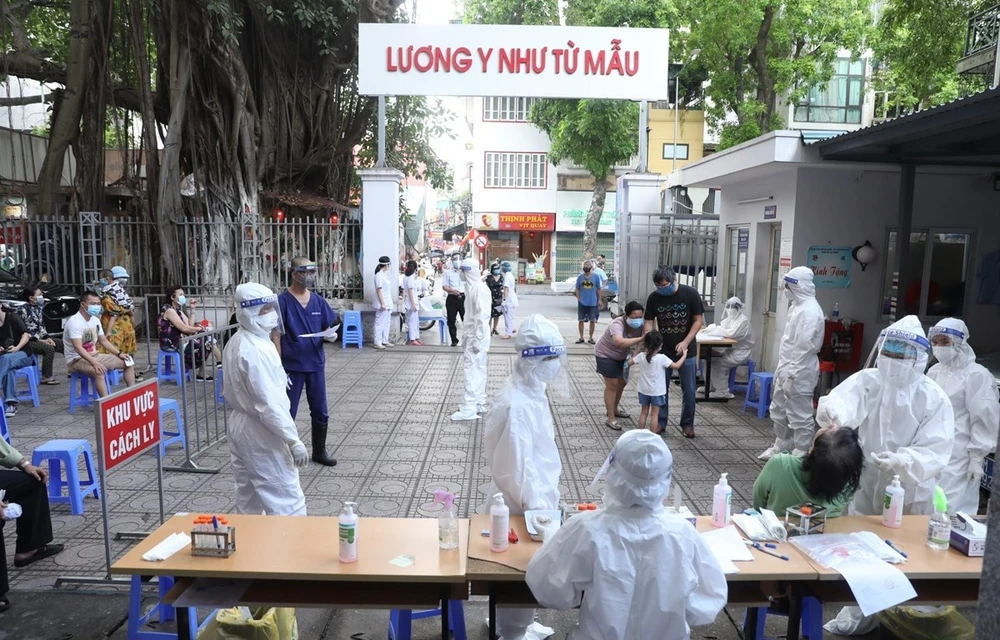
Hanoi, (VNA) - Despite going through numerous critical situations during rolling outbreaks of the COVID-19 pandemic for more than two years, the healthcare system has grown strong.
With the motto of “four on-site” in responding to the pandemic, the grassroots healthcare facilities network has well played its role as the “gate” to receiving and treating COVID-19 patients.
However, such tremendous challenges have also exposed weak points in the network.
The five-part series “Grassroots healthcare: stronghold to stand firm in any situation” aims to give readers an overview of the condition of the grassroots healthcare system, which is the first and most important link in the fight against the pandemic, and suggest what needs to be done to strengthen the system, turning it into a reliable pillar of healthcare for the people.
Part 1: 'Go to every alley, knock on every door, track every subject'
At 6:45am on March 5, P.H.M walked to the health station of Nhan Chinh ward in Thanh Xuan district of Hanoi.
Though the ward health station is only several hundred metres from her house, M had never visited it before. Whenever she or anyone in her family has health problems, they always go straight to big hospitals.
But when she tested positive for COVID-19, M for the first time went to the ward health station to register her condition and receive guidance on at-home treatment. Health stations at the ward level are the first line of defence in the fight against the pandemic in Vietnam.
Diligent 'gate keepers'
M is not the only one who overlooked the grassroots health facilities. Many have adopted the habit of seeking medical treatment at big hospitals. Grassroots health stations are often associated with mountainous or underdeveloped areas with poor access to hospitals.
But the grassroots health stations have proved their important role during the fight against COVID-19, from pandemic prevention to health care provision, particularly for the elderly and patients with chronic diseases.
When the pandemic broke out in southern localities at the end of 2020, Chao Van Say returned to his home in La Co village, Ban Giang commune, Tam Duong district (the northern mountainous of Lai Chau). He made a medical declaration at the commune’s health station and was instructed on how to self-isolate and monitor his health at home.
Every day, medical workers at the Ban Giang health station visited COVID-19 patients and people with close contact with them in five villages of the commune to check on their health.
Say said that residents visited local heath stations long before the COVID pandemic, whenever they have any health problems.
In rural or disadvantaged areas, communal health stations are always the first choice for residents when they need health care help.
But in big cities, where there is easy access to big hospitals, those stations were often overlooked, until the pandemic broke out.
In the last days of February and early March this year, the number of COVID-19 cases continuously reached new highs, even surpassing 30,000 a day, putting tremendous pressure on the grassroots medical stations responsible for registering and managing cases as well as distributing medicines and monitoring patients.
 Dr. Pham Quoc Hung, head of the health station at Thanh Luong ward, Hai Ba Trung district, Hanoi (Photo: VNA)
Dr. Pham Quoc Hung, head of the health station at Thanh Luong ward, Hai Ba Trung district, Hanoi (Photo: VNA) Dr Pham Quoc Hung, head of the health station at Thanh Luong ward, Hai Ba Trung district, Hanoi, said the ward has more than 23,000 households. The station’s staff were overloaded when the number of COVID-19 cases soared. Besides monitoring patients who were quarantined and treated at home, the medical workers also had to accelerate the injection of the first booster dose for local residents and even provide vaccination at home for the elderly.
“Each day we received several hundred phone calls from COVID-19 patients and people who had close contact with patients, asking for guidance, advice and help,” he said.
Overloading and paradox
As COVID-19 is classified in Group A of communicable diseases, patients are required to report to the local medical station. Therefore, when the number of cases increases rapidly, local health stations quickly became overloaded.
Statistics from Ho Chi Minh City show that at the peak, around 86,000 COVID-19 patients were monitored and treated by ward-level medical stations.
In Hanoi, over 99% of the 1.5 million COVID-19 cases were managed and treated at home.
The pandemic has shed light on the role of grassroots medical stations.
In Vietnam, the healthcare network is arranged according to administrative levels, and grassroots healthcare facilities comprise of district and ward/communal levels.
In normal situations, the grassroots health facilities met demand. However, when the pandemic broke out, the needs far outstripped their capacity, causing tension and overloading for the grassroots health facilities for a long time.
With the high risk of the pandemic returning and rising demand for health care in society, it is urgent to strengthen the grassroots health care system so that they are capable of responding to any situation./.


